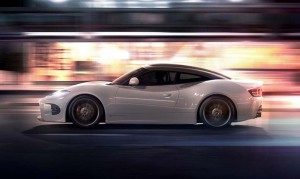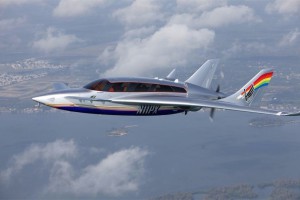
Spyker's B6 Venator concept still hadn't made the jump to production when it went bankrupt. Officials didn't mention it when Spyker announced its emergence.
Once again, the Dutch sports car manufacturer Spyker has emerged from bankruptcy, beating back a legal challenge from a key creditor.
Exactly what will happen next, however, is uncertain, as a statement by the boutique car company made no mention of the B6 Venator model it was working on when things appeared to come to a crashing halt late last year. Moving forward, however, Spyker says it is set to merge with a Portland, Oregon-based electric aircraft manufacturer, Volta Volare.
“Spyker is back with a vengeance and we look forward to a bright future,” said Victor Muller, the company’s founder and CEO, who admitted going through “a very rough patch” since Spyker was forced to declare bankruptcy last December.
The 15-year-old firm’s ambitions have gotten it into trouble several times. Spyker bought the Swedish carmaker Saab from General Motors following the American maker’s bankruptcy. But the operation quickly ran out of cash and GM was able to block Spyker from doing a deal with several interested Chinese partners.
It eventually had to liquidate Saab, which, ironically, was then sold to the Chinese.
China’s Youngman – one of the bidders for Saab – later partnered with Spyker, investing about $33 million to try to put a luxury SUV into production based on the Dutch firm’s D8 Paris-to-Peking concept.
But Spyker focused its primary efforts on developing the B6 Venator, set to be the latest in a series of ultra-exotic sports cars. Whether that mid-engined model will now go into production isn’t clear but Spyker’s website features plenty of images of the two-seater.
(Spyker declared bankrupty, but Muller vows comeback. For more, Click Here.)
For now, it has to move ahead with all the business dealings held up by the court battle, including the planned merger with Volta Volare.
“After winning a long legal battle with just one creditor, we have now finally succeeded in exiting moratorium and we are back in business as a healthy, debt-free enterprise,” said Muller, a one-time attorney and venture capitalist. “In the coming weeks we will finalize the agreements with investors which were held up for over two months by the protracted litigation.”
(Click Here for details about Tesla’s first-ever incentive program.)
The tie-up with an aircraft manufacturer is not entirely out of line. When the company was founded in 1989 years ago, it picked up the name of an earlier Dutch automobile manufacturer that dated back to the dawn of the 20th Century. The new company’s logo, which features a propeller, picks up on the fact that the original Spyker expanded into the aircraft business in 1914, before going broke 11 years later.
The modern Spyker has frequently used aerospace imagery in its vehicles, incorporating propeller and turbine imagery in its products, and giving earlier models names like the Aileron.
(New public-private California initiative takes aim at elusive battery breakthrough. Click Here for more.)
The challenge for Spyker and its new partner now will be keeping both businesses airborne.

